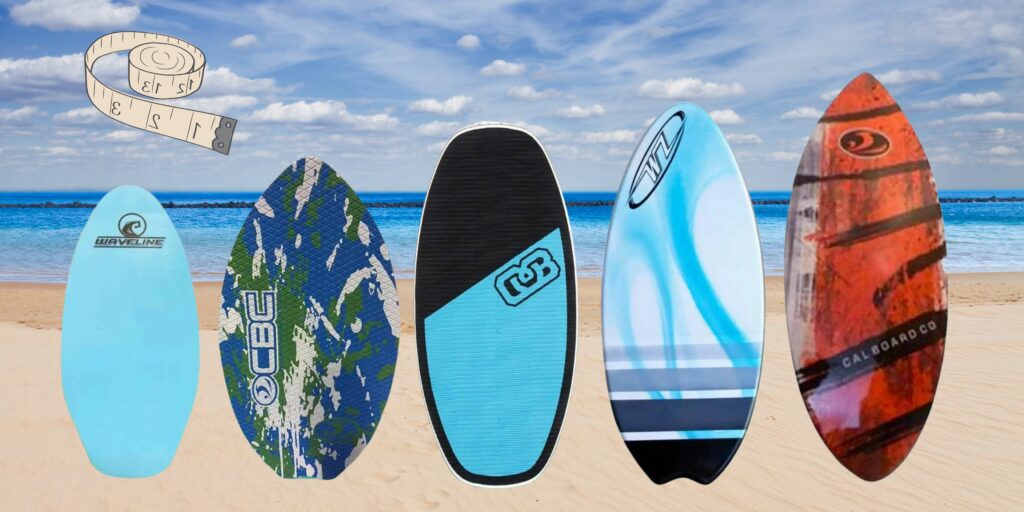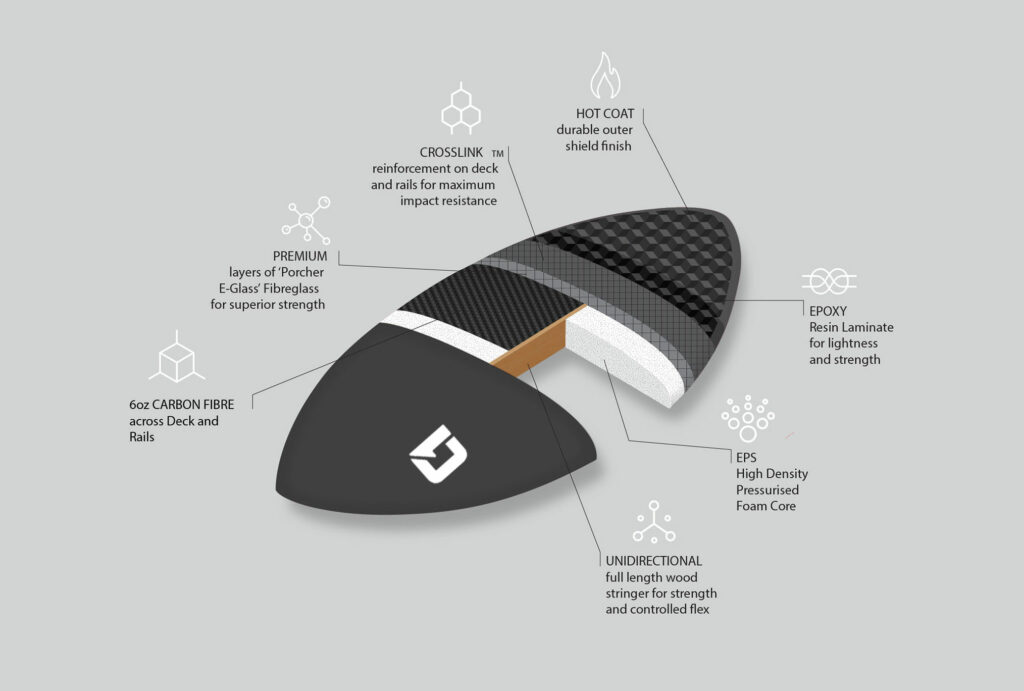The sight of someone gliding across the shallow waves on a skinny board immediately conjures up images of surfing for most beachgoers. However, the sport of skimboarding has been around just as long as surfing, if not longer. Though the two board sports share some similarities, they offer very different experiences. Skimboarding provides a unique thrill along the shoreline that even avid surfers should try. With less gear required, skimboarding is often easier for beginners to pick up. However, surfing allows wave riders to tap into the raw power of the open ocean.
While skimboarders are confined to riding small waves in inches of water, surfers can traverse waves over 15 feet tall in the deep sea. Both sports provide an adrenaline rush like no other. This article will break down the key differences and similarities between these two iconic board sports of the beach.
Surfing vs Skimboarding at glance
While both activities involve wave riding, the gear, methods and settings vary:
Boards:
- Surfboards – bigger, thicker and for deeper water.
- Skimboards – smaller, thinner, for shoreline waves.
Wave Dynamics:
- Surfers use swelling ocean waves for longer, faster rides down the face.
- Skimboarders exploit shore break white wash for quick spurts in inches of water.
Takeoff:
- Surfers paddle out then pop up & surfing needs more time to start.
- Skimboarders sprint from shore, tossing the board to intercept receding wash. Skimboarding demands instant reactions.
Maneuvers:
- Signature surfing moves include cutbacks, floaters and aerials off swells.
- Skimboarding maneuvers like kickflips, bigspins and wraps flow across rapidly changing wash textures.
Wipeouts:
- Falling off a skimboard is fairly shallow. Surfing crashes into reefs or sandbars pose bigger safety concerns.
Despite variances, both activities require balance, wave sense and board control. The thrill of riding waves binds them, while differing techniques and gear accentuate each sport’s uniqueness.
Surf and Skim: Mastering The Fundamentals
| Surfing |
|---|
| Surfing focuses on riding the power and fluidity of ocean waves. Mastering the sport takes years of practice in paddling out past breaking waves, popping up on the board at the optimal moment to catch the wave, and carving across the wave face. Surfers work to harness the raw energy of the ocean by using balance and muscle memory to flow in sync with the wave’s movement. The thrill stems from reading the ocean effectively to position for an ideal ride all the way to shore. |
| Riding the wave requires agility and finesse. Subtle shifts in body placement enable surfers to adjust speed and stay centered on the fast-moving water. Carving turns accentuates the wave’s power, with surfers snapping back off the top of the curl. Some surfers slash vertically across the wave to launch into the air, while others maintain a smoother glide across the face. Over years of surfing, abilities like wave selection, positioning and technique become intuitive as the surfer and ocean move in harmony. |
| Skimboarding |
|---|
| Skimboarding emphasizes anticipating and instantly reacting. Riders sprint from shore and glide out across shallow water on a skimboard, waiting for an incoming wave to catch the board. Success requires perfect timing, lightning reflexes, and uncompromising focus. In contrast to surfing’s rhythm, skimboarding means seizing sudden opportunities the ocean presents in rapid bursts near the shoreline. The adrenaline rush comes from accelerating over wet sand on a slender wooden board. The cadence of skimboarding happens in a matter of seconds, rather than lengthy paddle outs. |
| Positioned on the beach, skimboarders analyze swells to identify ideal wave sets to ride. The moment a wave begins to crest, they sprint hard carrying the board. With a hop onto the board, they skim out across the shallow wash. Forceful arm scoops build momentum to carry them over the glassy sheet just in time to intercept the wave. Timing and commitment are paramount – hesitate even briefly and the opportunity disappears. Rather than harness the ocean’s energy like surfers, skimboarders must instantaneously react whenever suitable wavelets appear. Bails occur frequently, making skimboarding very approachable. Each wave presents a new test of agility and reaction speed. Skimboarders thrive on improvising thrill rides from the ocean’s unpredictable whims. |
Board Breakdown
Length
Surfboards clearly have superior length, typically spanning 6 to 12 feet. The elongated design lends stability for paddling beyond shore break. Skimboards range from 3 to 5 feet long. Their compact form factor allows swift maneuvering in shore break.
Construction
Both sports demand specialized equipment. Surfboards have lightweight foam cores encased in fiberglass for strength, flexibility and flotation when riding ocean swells. Skimboards also use foam or wood cores, but the materials emphasize rigidity for flat out skimming speed. Added grip tape aids control on sandy surfaces.
Shape
The pointed noses and streamlined silhouettes of surfboards are optimized to pierce waves smoothly. Wider, thicker boards assist beginners initially. Experts control narrower shortboard designs for tighter curl carving. Skimboards share a uniformly slim, flat shape for skipping wash. Larger skimboards suit new riders through added stability.
Use
Surfboard hydrodynamic design, buoyancy and surface area target harnessing ocean waves farther offshore. In contrast, compact skimboards excel inshore, granting access to closing waves along sandy beaches. Their shape and grip helps master the unique shorebreak terrain.
Environmental Factors
Where the Waves Are
Surfing relies on exposed beaches with access to unimpeded ocean swells to shape sizeable waves. No wonder legendary spots line points and coves with comingling currents churning out smooth rolling waves consistently. Skimboarding simply needs wet sand or any sloped beach with a sandy bottom offshore. The ideal skim habitat starts with a gently sloping shoreline. Washing waves leave a film for skimming back toward land.
Wave Watching
Surfing depends on well-formed swells that peak and break gradually. Distant storms concentrate wave energy for ideal lift and curl. Paddling strength and patience separates who rides the next clean wave between sets. Skimboarding chases shore whitewash and swash opportunities popping up spontaneously. It means moving in milliseconds before the wash vanishes.
is skimboarding harder than surfing?
On appearance alone, skimboarding seems easier than surfing tiny swaths of shore break rather than big waves. But its difficulty lies in the split-second timing needed. Sprinting full speed toward swirling wash tests balance and reactions. Changing terrain underneath makes carving skimboards an exercise in adaptation.
Surfing’s formidable challenges include reading ocean swells, having the endurance to paddle out, popping up on the board, and recovering from crashes into reefs or sandbars below.Which waterborne dance calls more deeply depends on personal passion for walking the wave line. Both avenues for adventure demand grit and perseverance before unleashing their rewards. Only you can decide which waves whip your soul toward the sea!
Final Thoughts
While adaptations differ between surfing and skimboarding, the commitment to progressing either path brings profound rewards. The only real question is – which watery rhythm resonates deepest with your spirit?
I am Fornillos Bogs, a seasoned professional surfer and accomplished skimboarder originally from Tanauan, Leyte, Philippines. With a remarkable background in both sports, I have carved my niche in the aquatic world. Currently, I reside in Quezon City, Philippines, known for my exceptional skills on the waves and impressive performances in skimboarding competitions. My journey from the serene shores of Tanauan to the bustling city of Quezon City serves as an inspiring testament to my dedication and passion for riding the waves.


